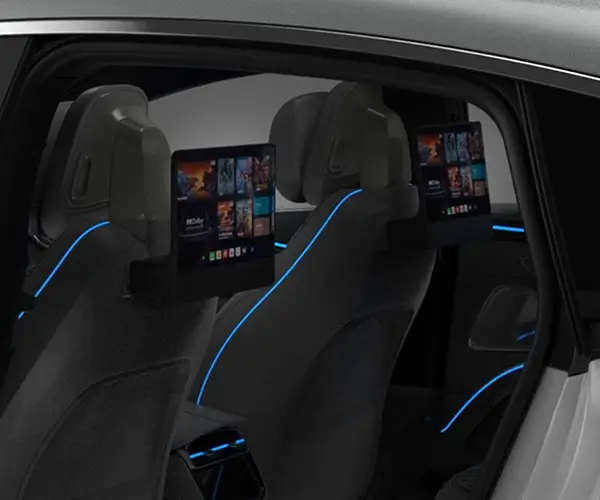Imagine a world where machines move with the grace and precision of a human hand—delivering flawless results in factories, laboratories, and even our homes. At the heart of this revolution lies an extraordinary piece of engineering: the robotic arm powered by servo motors. These mechanical marvels are not just tools of automation; they are the harbingers of a future where efficiency, flexibility, and intelligence converge.

To understand the significance of a robotic arm driven by servo motors, we first need to appreciate what a servo motor is. Unlike regular motors, servo motors are specialized devices designed for precise control of angular position, velocity, and acceleration. This precision is achieved through a feedback mechanism—typically encoders—that constantly inform the control system about the motor's current position. With this real-time data, servo motors can make minute adjustments, enabling robotic arms to perform delicate tasks with remarkable accuracy.
The basic structure of a robotic arm consists of multiple joints and segments, similar to a human arm. Each joint is powered by a servo motor, translating electrical signals into meticulously controlled movements. Think of it as an artist's brushstroke, where each movement is intentional and refined. Whether it’s picking up fragile objects, assembling tiny circuit boards, or welding heavy metal parts, the servo motor provides the responsiveness and fine-tuned control necessary for such tasks.
One of the key advantages of using servo motors in robotic arms is their ability to execute complex and coordinated motions. Unlike traditional motors that may only offer on/off or simple variable speed control, servo motors provide proportional control. This means the robotic arm can perform smooth arcs, precise rotations, and intricate maneuvers that mimic human dexterity. For industries like electronics, automotive manufacturing, and medical devices, this level of precision is invaluable. It ensures consistent quality, reduces waste, and increases throughput.
Furthermore, servo motors are known for their excellent response times. When a robotic arm detects a new command—like reaching out to grab an object—the servo motor responds almost instantaneously. This rapid reaction is crucial in environments where timing and accuracy are everything. In assembly lines, where tasks occur in rapid succession, the ability of a servo-driven robotic arm to react promptly can significantly elevate productivity.
But the appeal of robotic arms using servo motors extends beyond their technical capabilities. Their design flexibility allows for customization tailored to specific applications. Engineers can modify the length of the arm segments, the torque of the servo motors, and the control algorithms to optimize performance. This adaptability means robotic arms can be built for simple pick-and-place tasks or complex operations like surgical procedures.
In recent years, advancements in servo motor technology have accelerated their integration into more sophisticated robotic systems. Brushless DC motors, for example, have become increasingly popular due to their high efficiency, longevity, and ability to operate at high speeds with minimal maintenance. When coupled with intelligent controllers, these motors enable robotic arms to perform adaptive, responsive actions that were once thought impossible.
Of course, designing a robotic arm using servo motors involves numerous considerations. Power supply stability, control software sophistication, mechanical design, and safety features all play critical roles. Innovations such as advanced PID controllers and machine learning algorithms are enhancing the capabilities of servo-driven robots, allowing them to learn and improve over time. This convergence of hardware and software is creating robotic systems that aren’t just programmed but can also adapt and optimize their performance dynamically.
From assembling tiny electronics to lifting thousands of pounds of materials, robotic arms equipped with servo motors are reshaping industries. They are helping factories cut costs, improve safety, and produce higher quality products. Medical robots assist in delicate surgeries with unparalleled precision, while service robots enhance customer experiences in hospitality and retail settings.
As we look toward the future, the potential innovations are staggering. With ongoing developments in lightweight materials, miniaturized servo motors, and smarter control systems, robotic arms will become even more versatile and accessible. They will integrate seamlessly with artificial intelligence, enabling autonomous decision-making and unprecedented levels of automation.
In summary, the robotic arm driven by servo motors exemplifies a perfect symphony of mechanical ingenuity and electronic control. Its blend of precision, responsiveness, and adaptability is powering a new wave of industrial and technological breakthroughs. For industries aiming to stay competitive in a rapidly evolving world, embracing this technology is no longer optional but essential.
Stay tuned for the next installment, where we will explore specific applications, innovative designs, and the future trajectory of servo motor-powered robotic arms that continue to push the envelope of what’s possible.
Leveraging innovations in modular drive technology, Kpower integrates high-performance motors, precision reducers, and multi-protocol control systems to provide efficient and customized smart drive system solutions.




































